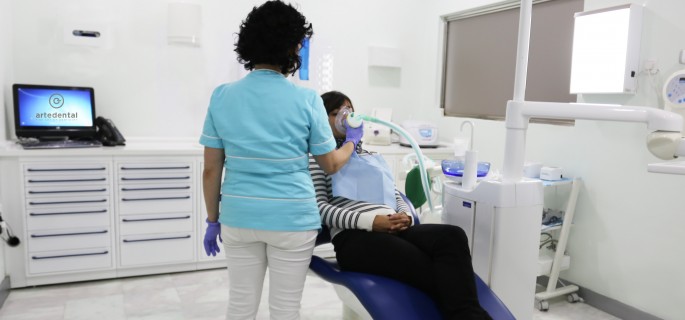How Artedental really can help you overcome your dread for good
Have you ever seen a dentist’s surgery and panicked? Surely yes.
In my case, the fear was produced by the size of the injection used for anesthesia.
The procedure and the feeling was always the same. Eyes closed, banal conversation with the nurse or dentist to divert attention, irritating sting in the gum (sometimes more than one), shock and a bitter taste.
After many visits to the dentist, now my first thought upon entering any dentist is “Don’t look around!”
There is a condition already defined for this type of fear, Dentophobia, which as its name suggests is the fear of the dentist and their treatments.
In its description, some experts describe it as “unjustified” or “exaggerated”. I could not disagree more.
What is a fact is that this distress causes many people to renege on a visit to a professional, with terrible consequences for oral health.
In the US for example, the American Dental Association says that more than 75 per of patients acknowledged having suffered it and about ten per cent of sufferers choose not to visit the dentist regardless of its consequences.
Until just a few weeks ago, I would have empathised with all ten per cent. One of ten per cent and why not?
Just before Easter, I had to undergo a minor operation in the Artedental clinic in Puerto de la Cruz.
In my head, one month in advance, I had prefabricated my memories and pains. And there I was, seated in the cabinet with a cyclinder and mask attached. I had been alerted that I would have conscious sedation but how mny among us believe the story that tey will not feel pain?
It turns out that this analgesic procedure is fairly widespread in the US and in some European countries, and is the inhalation of nitrous oxide and oxygen. Here in Spain the application is recent, and not all clinics have it. In fact, in the Canary Islands, the centres where it is offered, as in the case of Artedental, are scarce.
However, many of the official College of Dentists in Spain, after realising the advantages, have begun to offer training for use among professionals.
Popularly this formula is known as “laughing gas” and I was grinning from ear to ear as I had the routine anesthesia injection. And an absolute absence of pain, nerves or anxiety.
Its administration also extends to other branches of medicine. According to the National Institutes of Health (NIH, for its acronym in English), the group of institutions of the US govern-ment dedicated to research, it can be used in various minor surgical procedures.
The process is simple. Inhale for five to ten minutes and wait. A feeling of well-being radiates through the body. To be honest, my feeling was the same as I experience after drinking several beers at a beach bar, maybe even better. Muffled laughter, inappropriate comments and absolute relaxation.
The first reaction was to ask whether I would be able to drive back home in that state or if I was going to get some sort of “hangover”.
According to Victor Cubillo, medical director of Artedental, “nitrous oxide is known for its safety in administration, rapid absorption, distribution and elimination; and low anesthetic potency “.
That is, the patient remains conscious throughout the procedure, the body rids itself of any remaining gas within minutes of completing the treatment and you are able to go home on your own, without any fear of running foul of the Civil Guard.
What happened next was an unusual experience on my next visits to the dentist. Grinning from ear to ear as I received my injection. And absolutely no pain during the operation, obviously because of the effect of analgesic and anesthetic. This undoubtedly will mark a turning point in my future visits to the dentist.
article published in Tenerife News



